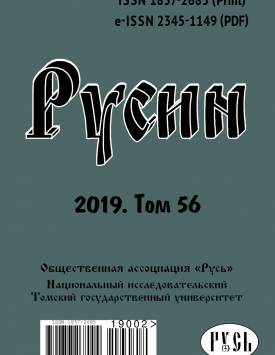The Commonplace Semantics of Bionyms in Slavic and Non-Slavic Linguistic Cultures (the Results of the Experiment)
The paper deals with ethno-linguistic description of everyday language and metalanguage consciousness. It presents the results of experimental research into commonplace semantics of bionyms rooster, crow, donkey in languages which differ both typologically and genetically. The experiments have revealed both the universal characteristics of bionnyms, presented in the language consciousness of native speakers, and the idio-ethnic features determined by the national picture of the world. So, the image of the rooster causes an ambivalent attitude in the analyzed linguistic cultures. While maintaining the mythological perception of the rooster as a bird foreshadowing the sunrise with its crow, there are signs of the nationally-based rooster symbolism in all linguistic cultures in various registers: from the national symbol (the French), or a symbol of diligence (the Chinese) to ironic attitude (the Russians and Serbs). All the languages under analysis display negative attitude towards the bionym crow. The common features in different languages include descriptive characteristics, such as the bird with black coat, eating carrion and auguring ill. However, there are various behavioural characteristics that differ from language to language: thieving, greedy and stupid (the Russians and Serbs) or noisy and boisterous (the Kazakhs and Chinese).The paper also reveals both universal and national-specific characteristics of the bionym donkey. Alongside with its general perception as a domestic animal, the embodiment of stupidity and stubbornness, there are characteristics significant to the national pictures of the world, in which the donkey is a symbol of diligence (the Chinese and Kazakhs), a useless animal in terms of meat consumption (the Kazakhs), or a creature associated with the Christian world view (the Russians, Serbs, French).
Keywords
лингвокультурология, национальная картина мира, сопоставительная лексикография, обыденная семантика, языковое сознание, бионим, linguoculturology, national picture of the world, comparative lexicography, commonplace semantics, language consciousness, bionymAuthors
| Name | Organization | |
| Lebedeva Natalya B. | Kemerovo State University | nlebedevab@yandex.ru |
| Rabenko Tatyana G. | Kemerovo State University | tat.rabenko@yandex.ru |
References

The Commonplace Semantics of Bionyms in Slavic and Non-Slavic Linguistic Cultures (the Results of the Experiment) | Rusin. 2019. № 56. DOI: 10.17223/18572685/56/14
